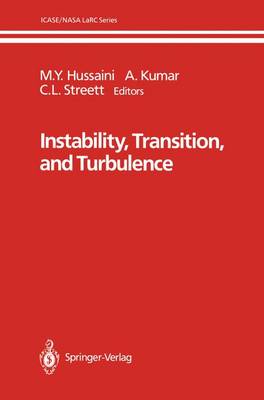ICASE/NASA LaRC
2 total works
The main theme of this monograph is the generation of sound by, and the propagation of sound in, fluid flows. These include flows around machinery, airfoils, and other man-made objects, as well as the flow of wind around obstacles. The chapters in this volume represent the results of a workshop discussing mathematical and computational aspects of the interaction of sound with air at the Institute for Computer Applications in Science and Engineering, at the NASA Langley Research Center, Virginia, USA. Topics covered include: classical theoretical approaches (which can serve to supply both efficient formulations for computational implementation and the boundary conditions that are essential for accurate simulations); mathematical aspects of acoustics; validation methods (including stability considerations, gridding and back-reactions); direct simulation (the use of computational fluid dynamics to describe the generation, transmission and radiation of sound in fluid flows); and computational methods for unsteady compressional flows.
Instability, Transition, and Turbulence
by M. Yousuff Hussaini, A. Kumar, and C. L. Streett
Published 23 September 1992
This volume contains the proceedings of the Workshop on In- stability, Transition and Turbulence, sponsored by the Institute for Computer Applications in Science and Engineering (ICASE) and the NASA Langley Research Center (LaRC), during July 8 to August 2, 1991. This is the second workshop in the series on the subject. The first was held in 1989, and its proceedings were published by Springer-Verlag under the title "Instability and Transition" edited by M. Y. Hussaini and R. G. Voigt. The objectives of these work- shops are to i) expose the academic community to current technologically im- portant issues of transition and turbulence in shear flows over the entire speed range, ii) acquaint the academic community with the unique combination of theoretical, computational and experimental capabilities at LaRC and foster interaction with these capabilities, and iii) accelerate progress in elucidating the fundamental phenomena of transition and turbulence, leading to improved transition and turbulence modeling in design methodologies.
The research areas covered in these proceedings include receptiv- ity and roughness, nonlinear theories of transition, numerical simu- lation of spatially evolving flows, modelling of transitional and fully turbulent flows as well as some experiments on instability and tran- sition. In addition a one-day mini-symposium was held to discuss 1 recent and planned experiments on turbulent flow over a backward- facing step.
The research areas covered in these proceedings include receptiv- ity and roughness, nonlinear theories of transition, numerical simu- lation of spatially evolving flows, modelling of transitional and fully turbulent flows as well as some experiments on instability and tran- sition. In addition a one-day mini-symposium was held to discuss 1 recent and planned experiments on turbulent flow over a backward- facing step.

